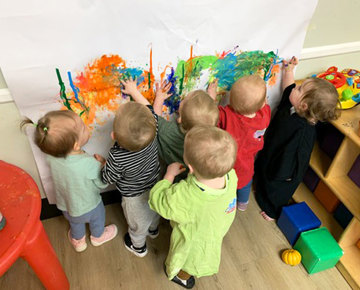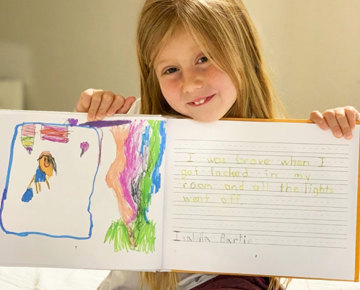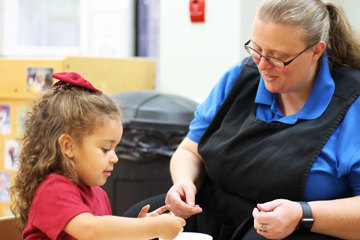Understanding the ABCs of Behavior Management

Understanding the ABCs of Behavior Management
Are you frustrated with students kicking, hitting, and biting in the classroom for “no reason”?
One of the biggest struggles for early childhood educators today is understanding the “why” behind challenging behaviors. Most of the time children are unable to articulate the accurate root of the behavior.
It’s important to remind yourself, especially in stressful situations, that there is ALWAYS a reason for a displayed behavior. In fact, there are four reasons children display maladaptive behavior. Behavior specialists label these reasons as functions of behavior.
The four functions of behavior are the following:
- Avoidance – Children may display inappropriate behavior to avoid something they do not want to do. Example: The child starts to run around the playground when the teacher calls the group to line up and come inside.
- Attention – The child attempts to gain attention by displaying a particular behavior. The attention received can be negative or positive. Example: The child is frustrated because a friend chooses to play with someone else. The child attempts to gain attention by disrupting the play of their peers.
- Access to Tangible – The child attempts to gain an activity or object they want. Example: The child wants a toy that his peer is playing with. The child attempts to take the toy, and when unsuccessful, he throws himself on the floor.
- Sensory Stimulation – The child attempts to meet a sensory need because it feels good or helps to relieve something that feels bad. Example: The child takes her clothes off when she gets upset in the classroom.
Are you looking for a solution to challenging behaviors?? What if learning your ABCs could help?
As early childhood practitioners, we tend to first identify specific behaviors we want to change. Instead, we should be examining the related function the child is attempting to achieve.
The process may be a bit more complicated than it seems, though, because a specific behavior can be associated with more than one function. Therefore, to develop an action plan, we need to analyze the ABCs of behavior:
 This analysis process assists in identifying the function(s) of behaviors displayed. The ABCs not only help to identify negative behavior functions, but positive behavior functions as well. This is why the dreaded word documentation is so important. By examining behavior through this ABC lens, we can identify established patterns and our role in contributing to the behavior we seek to change.
This analysis process assists in identifying the function(s) of behaviors displayed. The ABCs not only help to identify negative behavior functions, but positive behavior functions as well. This is why the dreaded word documentation is so important. By examining behavior through this ABC lens, we can identify established patterns and our role in contributing to the behavior we seek to change.
So, knowing your ABCs is a great place to start. This is essential in creating an intervention plan to increase developmentally appropriate skills and decrease maladaptive behaviors.
Let’s look at an example:
Scenario: At least three times last week, when the teacher announced the cleanup time, one child started to run around the room dumping the toys.
On the first day, the teacher attempted to handle the situation by asking the child to sit with her and holding him until the transition outside. The teacher called for a manager to assist on the second and third days.
Each day the manager removed the child from the room until it was time to go outside. This week the child has been joined by a couple of peers mimicking the behavior.
Antecedent – The teacher instructs the children to clean up the classroom.
Behavior – The child screams “no” and starts to run around the room, dumping toys.
Consequence – The teacher calls the director, and the director takes the child out of the classroom.
What function do you identify in the scenario? Initially, the function is avoidance. However, attention could also be added to the list as the situation progressed.
Often educators explore changing the consequences to prevent the reinforcement of the behavior. Although altering the consequence may lend some support, let’s dive deeper and consider changing the antecedent. Then, brainstorm changes that could be made to the environment or different transition strategies that would provide some individualized support.
Behavior does not change overnight. There is no magic pill or one strategy that works for all children. However, a positive and constructive approach to behavior management is a great place to start.
We encourage you to share your thoughts on this article with the Education team.
By Sheila Lewis, Ed.D | Director of ADA Compliance


